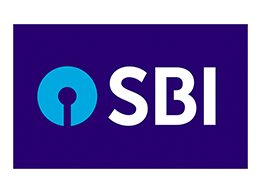Public sector banks (PSBs) in India have been the prime institutions of the Indian financial system. Among them, in terms of size as judged by asset base, branch network, and customer base, the State Bank of India (SBI) is the giant. The share price of the State Bank of India in the PSU segment of the banking industry has become prized by investors, especially since the bank has been a consistent dividend-paying entity.
Owing to its presence in the Indian financial ecosystem and being a government-owned entity, SBI has been an attractive investment for the purposes of dividends and medium-term to long-term capital gains. This article discusses how SBI has behaved as a dividend-generating machine and, by extension, its ramifications on share price movements.
Dividend History and Market Response
SBI share prices have been under the influence of dividend declarations made by the bank, especially at the fiscal year-ends and after the release of quarterly results. Throughout the years, SBI has had an uninterrupted record of declaring dividends to its shareholders. These payouts indicate the profitability, capital adequacy, and surplus position of the Bank.
For PSUs, dividend declarations are taken more as signals of financial strength. Such dividend stocks are scrupulously monitored by investors for income. When the dividend per share is raised or at least complied with, there are chances of temporary surges in the State Bank of India share price as these stocks catch the fancy of income-seeking investors.
However, dividend payments are not the only factor concerning price movement. General economic factors, regulatory orders, credit offtake trends, and levels of non-performing assets also play a role in impacting shares’ valuation.
Strategy Adopted for Dividends
Public sector banks, such as SBI, are often expected to declare dividends, translating a portion of their earnings to the Government. More often than not, this expectation could steeply sway their dividend policy.
Being listed and included in major indices such as Nifty 50 and Sensex, SBI must cater to expectations from shareholders while also taking care of its operational needs. Whenever SBI publishes, its share price becomes more correlated with quarterly earnings and with the management’s forward guidance on profitability, asset quality, and provisioning.
Moreover, the long-term perspective on the bank’s ability to sustain dividends or increase dividends while not compromising growth plans is also very important.
How to Invest in SBI Shares
Once new investors decide to take part in the stock performance of SBI, either for purposes of share price escalation or dividends, their first task will be to open a demat and trading account. Several brokers provide free demat account options nowadays, free of charge for the first year.
The shares in a demat account are mostly held electronically, and a trading account allows investors to hold buy or sell orders. Opening a free demat account is fast and digital in nature and should take into account KYC verification documents like PAN, Aadhaar, and bank details. Once opened, investors are able to track the share price of the State Bank of India, activate alerts for the same, and remain updated with corporate actions such as dividend declarations or bonus issues.
In a Macro Perspective
SBI gives direction to the assessment of the overall health of the banking sector. With a legacy of a big customer base, lending portfolio, and exposure to myriad industries, changes in SBI performance are in many ways perceived to be the assessment of a much wider banking picture.
Being part of sectoral funds and portfolios by institutional investors, the SBI share price could, therefore, instantaneously react to interest rate movements, credit growth, budgetary announcements, or banking reforms. In this context, dividends declared form a singularly important input in the overall valuation.
Conclusion
Over the years, the status of SBI as a public sector dividend-paying bank has formed the investor’s expectation. The State Bank of India’s share price reflects a mixture of income through dividends and India’s shifting banking landscape. For investors looking to access such PSUs, getting a free demat account would be the first step into the equity market



















